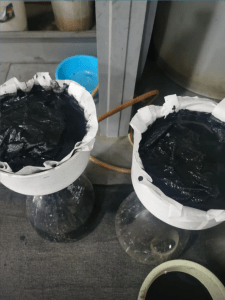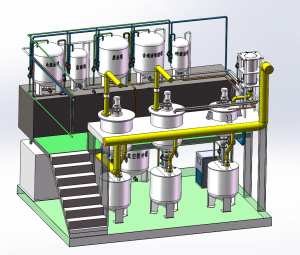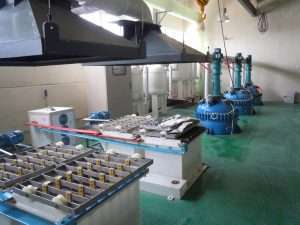Call us now:
There are various methods of nitride treatment, and the choice of which method depends on the type, concentration, source and other factors of the nitride to be treated. Some common treatment methods are listed below:
Biological treatment method: Using microorganisms to degrade, transform or adsorb nitrogen compounds and convert them into harmless substances.
Chemical reduction: Reduction of nitrogen compounds to nitrogen or ammonia, for example, by adding reducing agents (such as sulfites).
Chemical oxidation: oxidation of nitrogen compounds to more stable nitrogen oxides, e.g., by adding oxidizing agents (e.g., hydrogen peroxide, ozone).
Adsorption method: Adsorption of nitrogen compounds onto solid surfaces, e.g. by using materials such as activated carbon, molecular sieves, etc.
Activated sludge method: Using microorganisms in activated sludge to convert nitrogen compounds into nitrogen gas, which can be divided into traditional aerobic treatment and new anaerobic/aerobic treatment.
Membrane separation method: Using the selective permeability of membrane to separate out the nitrogen compounds, such as reverse osmosis, ultrafiltration and other methods.
Photocatalytic oxidation method: using photocatalysts (such as titanium dioxide) to oxidize nitrogen compounds to harmless substances under ultraviolet light irradiation.
Combustion method: Using high temperature combustion to convert nitrogen compounds into nitrogen and water vapor.
It should be noted that different treatment methods are applicable to different types and concentration ranges of nitrides, so in practice the choice needs to be made on a case-by-case basis.
Distillation method: Using the principle of distillation to distill out the liquid nitrogen compounds (such as ammonia), it can be used in atmospheric distillation, vacuum distillation, etc.
Ion exchange method: the use of ion exchange resin for selective adsorption and release of ions in water, can be removed from the water nitride ions.
Electrochemical treatment method: the use of electrochemical reactions to convert nitrides into harmless substances, you can use anodic oxidation, electrolytic reduction and other methods.
Biomass combustion treatment method: the use of high temperature generated by the combustion of biomass will be nitrogen decomposition into nitrogen and water vapor.
Condensation method: Use condenser to condense gaseous nitrogen compounds into liquid or solid state, so as to achieve the purpose of removal.
Plant uptake method: The nitrogen compounds are removed from water or air by using the uptake and transformation of nitrogen compounds by plants.
It should be noted that different treatment methods are applicable to different types of nitrogen compounds and concentration ranges, so the choice needs to be made on a case-by-case basis in practical applications. In addition, different treatment methods have their own advantages and disadvantages, such as treatment efficiency, cost, operational difficulties, etc., which need to be considered to choose a suitable treatment method.


